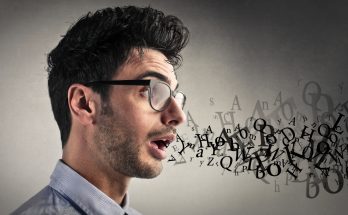The advent of social media has transformed many aspects of modern life, including the way we communicate. Platforms such as Twitter, Facebook, Instagram, and TikTok have not only changed the dynamics of personal interaction but have also significantly influenced the evolution of language. From hashtags to memes, these digital phenomena have introduced new linguistic elements and reshaped existing ones. This article explores how social media has impacted language evolution, examining various aspects from the proliferation of hashtags to the rise of internet memes.
The Rise of Social Media and Its Impact on Communication
The Digital Communication Revolution
Social media platforms have revolutionized communication by enabling instant, global interactions. Unlike traditional media, which often involved one-way communication, social media facilitates a two-way exchange where users actively participate in content creation and dissemination. This shift has led to the emergence of new communication norms and linguistic practices that reflect the fast-paced, informal nature of online interactions.
Character Limits and Language Economy
One of the earliest influences of social media on language is the imposition of character limits. Platforms like Twitter, originally restricted to 140 characters and later expanded to 280, have forced users to condense their messages into brief, impactful statements. This constraint has led to the development of new linguistic strategies, including:
- Acronyms and Abbreviations: Terms like “LOL” (laugh out loud), “BRB” (be right back), and “IMO” (in my opinion) have become ubiquitous in digital communication.
- Creative Spelling and Punctuation: Users often employ creative spelling (“gr8” for “great”) and unconventional punctuation (“!!1!” or “!!!1!”) to convey emotions and emphasis within the character limit.
The Role of Hashtags in Language Evolution
The Birth of Hashtags
Hashtags, which are words or phrases preceded by the “#” symbol, originated on Twitter in 2007. They were introduced by Chris Messina as a way to categorize and search for content on the platform. Since then, hashtags have become a fundamental element of social media language and culture.
Hashtags as Cultural Markers
Hashtags serve as markers of cultural and social phenomena, often encapsulating complex ideas or movements into a single, searchable term. They facilitate the aggregation of content related to specific topics, making it easier for users to follow and contribute to ongoing discussions. Some notable examples include:
- #BlackLivesMatter: This hashtag has been pivotal in organizing and mobilizing discussions around racial justice and police brutality.
- #MeToo: Used to highlight experiences of sexual harassment and assault, this hashtag has contributed to significant societal and cultural shifts.
The Evolution of Hashtag Usage
Over time, hashtags have evolved beyond their initial purpose of categorization. They now function as tools for:
- Brand Promotion: Businesses use hashtags to engage with their audience and promote products or campaigns. Examples include #JustDoIt for Nike and #ShareACoke for Coca-Cola.
- Social Movements and Activism: Hashtags are used to rally support for various causes and movements, amplifying voices and fostering solidarity among users.
Memes and Their Impact on Language
The Nature of Internet Memes
Internet memes are units of cultural information that spread virally across the web. They often take the form of images, videos, or text that are modified and shared by users. Memes are characterized by their humor, relatability, and adaptability, making them a powerful tool for communication and cultural commentary.
Memes as Linguistic Innovations
Memes have contributed to language evolution in several ways:
- New Vocabulary: Memes often introduce or popularize new words and phrases. For example, “meme” itself has become a widely recognized term, while phrases like “dank memes” and “cringe” have entered common usage.
- Phrasal Innovations: Memes frequently play with existing phrases or create new ones, leading to the evolution of language. For instance, the “Distracted Boyfriend” meme has given rise to various phrasal constructions like “distracted boyfriend” to describe changing interests.
The Lifecycle of Memes
Memes typically follow a lifecycle of emergence, peak popularity, and eventual decline. As memes evolve, they often undergo transformations in their meaning and usage. For example, a meme that starts as a humorous image may be repurposed to comment on serious social issues, reflecting shifts in cultural and linguistic trends.
The Influence of Social Media on Formal Language
The Blurring of Formal and Informal Language
Social media has blurred the lines between formal and informal language, leading to a more fluid use of language across different contexts. For instance, elements of informal online communication, such as emojis and slang, are increasingly making their way into formal settings, including professional emails and academic papers.
The Role of Emojis and GIFs
Emojis and GIFs have become integral to digital communication, providing users with new ways to express emotions and ideas. Emojis, which are pictorial symbols representing emotions, objects, or concepts, help convey tone and nuance that might be missing from plain text. GIFs, short looping videos, offer a dynamic way to express reactions or sentiments. Both forms of digital expression are influencing language by:
- Supplementing or Replacing Words: Emojis can sometimes replace words or phrases, conveying meaning more succinctly.
- Enhancing Emotional Expression: Both emojis and GIFs provide a means to express emotions and reactions in a way that text alone may not fully capture.
The Impact on Writing Standards
The influence of social media on language has sparked debates about writing standards and practices. While some argue that the adoption of informal language elements in professional contexts can undermine clarity and professionalism, others view it as a natural evolution reflecting the changing nature of communication.
The Future of Language in the Age of Social Media
The Continuation of Linguistic Innovation
As social media continues to evolve, it is likely that new linguistic innovations will emerge. Platforms like TikTok, with its emphasis on short-form video content, are already shaping the way people use language. The future may see further developments in:
- Interactive Language Forms: The rise of interactive and multimedia content may lead to new ways of using and combining language.
- Global Linguistic Exchange: Social media facilitates cross-cultural communication, which could lead to greater linguistic diversity and the blending of languages.
The Preservation of Language Diversity
While social media has the potential to standardize certain aspects of language, it also offers opportunities for the preservation and promotion of linguistic diversity. Platforms that support multiple languages and dialects can help maintain linguistic heritage and foster cross-cultural understanding.
Read More: The Intersection of Mathematics and Language: The Logic Behind Word Games
Conclusion
Social media has had a profound impact on language evolution, shaping how we communicate, express ourselves, and interact with the world. From the introduction of hashtags and the proliferation of memes to the blurring of formal and informal language, social media has driven significant changes in linguistic practices. As digital platforms continue to evolve, they will undoubtedly continue to influence language in new and unexpected ways, reflecting the dynamic nature of human communication.




